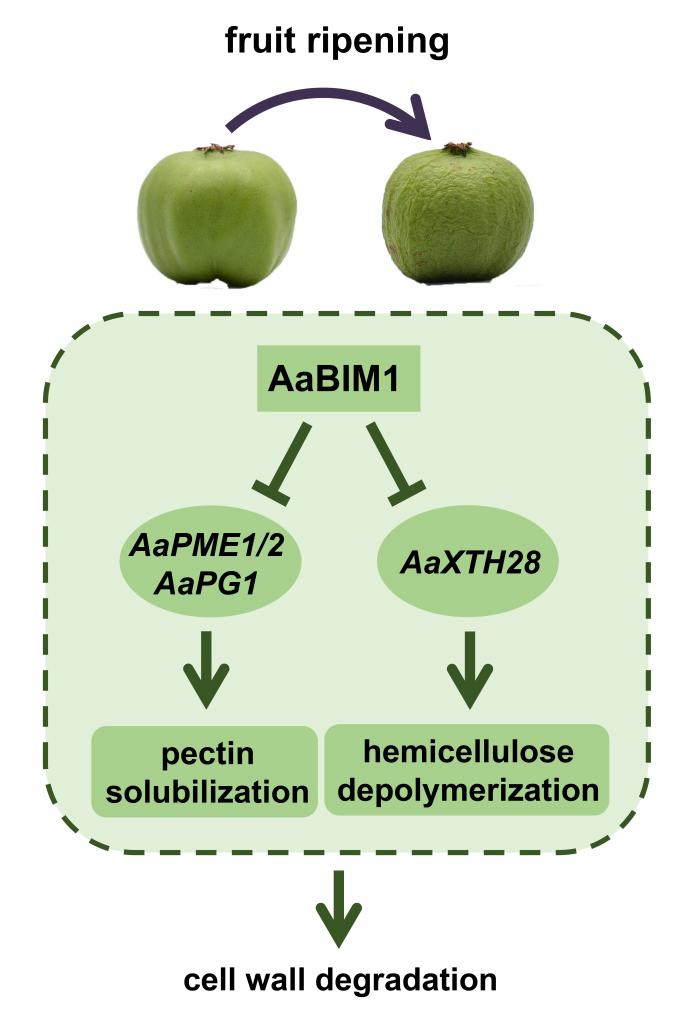Transcription Factor AaBIM1 Regulates Postharvest Fruit Softening of Kiwiberry
2024-09-09
Kiwiberry (Actinidia arguta) is a highly promising fruit species with small-sized fruits, edible smooth skin and unique aromatic flavor. As a typical climacteric fruit, kiwiberry has an extremely rapid softening process, which leads to major difficulties in postharvest storage and transportation. Hence, it is important to develop new kiwiberry varieties with favorable storage properties. However, research on the mechanism underlying the ripening and softening of kiwiberry is quite limited.
Researchers from Wuhan Botanical Garden identified AaBIM1 (a basic helix-loop-helix transcription factor) as a transcriptional repressor of cell wall degradation-related genes, and its expression profile exhibited a downward trend during ripening. It underscores a crucial role for AaBIM1 in kiwiberry cell wall metabolism, and also provides a strategy for the selection and breeding of kiwiberry varieties with prolonged storage capabilities.
This study analyzed the postharvest ripening process of kiwiberry and revealed that pectin solubilization and hemicellulose depolymerization were the primary contributors to fruit softening. Further analysis identified four cell wall degradation-related genes (AaPG1, AaXTH28 and AaPME1/2) potentially contributing to fruit softening. Moreover, the AaBIM1 protein was found to repress the expression of cell wall degradation-related genes, as well as delay fruit softening and the degradation of cell wall components. Collectively, reduced accumulation of AaBIM1 during postharvest ripening resulted in increased transcripts of cell wall degradation-related genes, thereby dramatically accelerating kiwiberry softening.
Results have been published in the Postharvest Biology and Technology entitled "Transcriptome analysis identified a transcriptional repressor, BES1-INTERACTING MYC-LIKE1 regulating rapid postharvest fruit softening ofActinidia arguta". Research assistant WANG Jian is the first author, and Prof. WANG Yanchang is the corresponding author.
This research was supported by the Chinese national key research and development program, the international partnership program of the Chinese Academy of Sciences, the biodiversity survey, observation and assessment program awarded by the Ministry of Ecology and Environment, the regional key projects of science and technology service network initiative granted by Chinese Academy of Sciences, and the Natural Science Foundation of China.

A proposed model for the mechanism by which AaBIM1 regulates rapid postharvest fruit softening of kiwiberry (Image by WANG Jian)